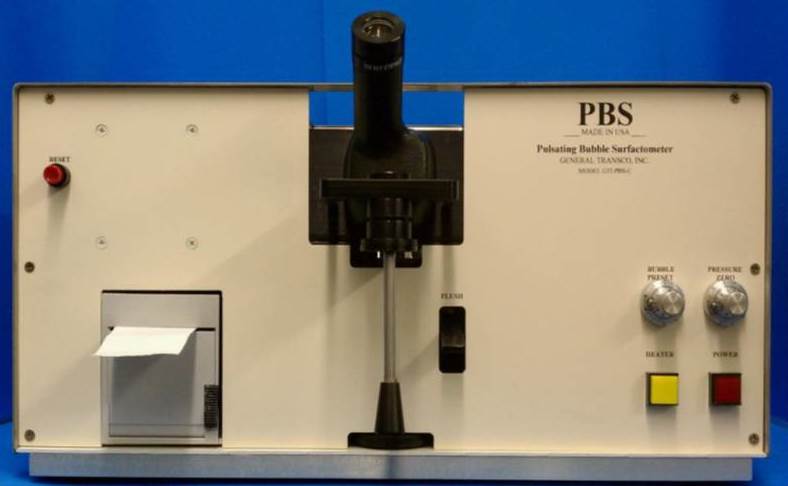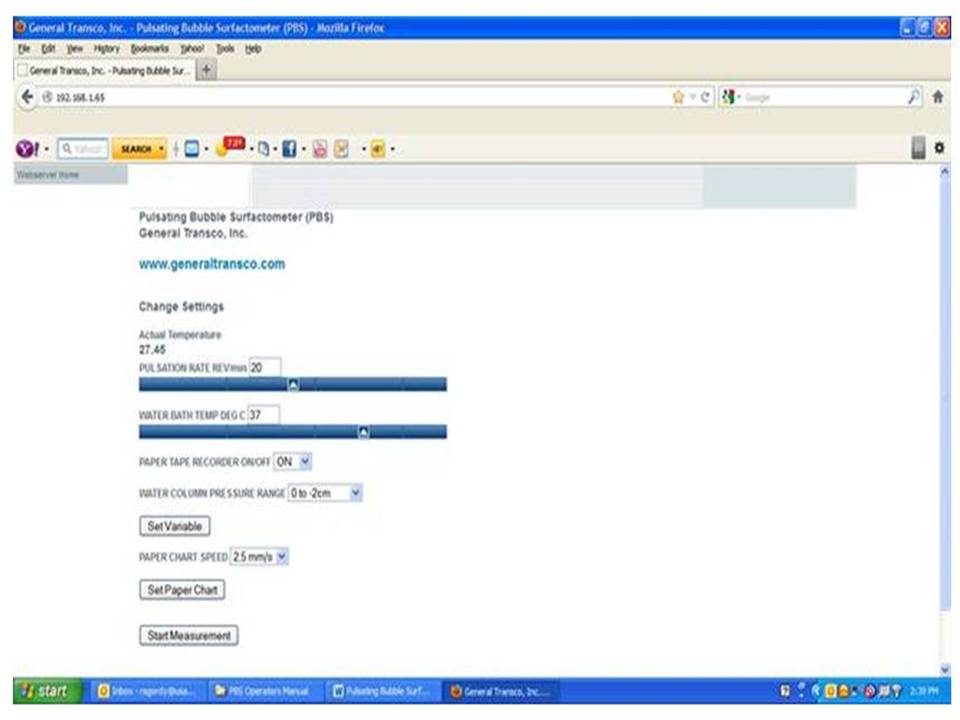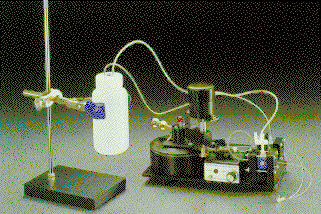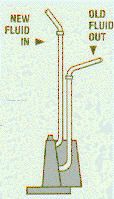
PULSATING BUBBLE SURFACTOMETER (PBS)

The PBS is a research instrument for the study of pulmonary surfactant. It measures the pressure difference across the surface of a bubble and calculates the surface tension of the liquid in which the bubble is formed. The measurements are performed dynamically at bubble pulsating rates chosen by the user from 0 to 50 cycles per minute.
The PBS is also useful for research on any organic liquid containing amphipathic molecules where an air-liquid interface is important. Such liquids could be:
|
- Toxic Agents |
- Amniotic Fluid - Bile |
- Urine - Plasma |
- Tears - Mucus |
|
- Serum |
Features and Benefits of this new and unique product:
PBS-C Specifications:
PBS PRESSURE CALIBRATOR

The PBS Pressure Calibrator is specifically designed for the PBS. It can be used to calibrate the pressure transducer circuits or verify calibration linearity prior to sample measurements. A rapid calibration check prior to critical measurements provides that extra level of confidence and quality assurance.
FEATURES
PBS-C General User Interface (GUI)
The PBS General User Interface is shown in the figure. The PBS-C system comes with a lap top computer preprogrammed with the necessary set up for operation with the PBS-C. The PBS-C operates as a server with the IP address of 192.168.1.64, the lap top computer is preset with the IP address of 192.168.65. When the PBS is turned on it sends the General User Interface (GUI) to the lap top. Selections are then made with the curser selection on the GUI on the lap top.
FEATURES

PBS HYPOPHASE EXCHANGE SYSTEM

The Hypophase Exchange System is specifically designed for use in conjunction with the PBS. It allows the liquid surrounding the bubble with its film to be replaced with distilled water or any agent suspected to affect the properties of the film, such as protein, enzymes, free fatty acids, etc.

The Hypophase Exchange System is a unique sample chamber design, which communicates with a special tubing that is filled with the liquid to be introduced into the sample chamber. The volume of liquid from the special tubing is displaced by a roller and moved into the sample chamber. Concurrently, an equal volume of liquid is displaced from the sample chamber, therefore, no pressure difference is created and bubble size remains constant.
FEATURES
E-mail: rsgordy@usa.net and pgordy@usa.net